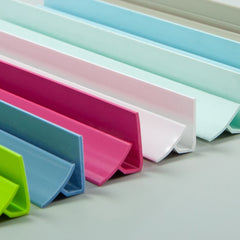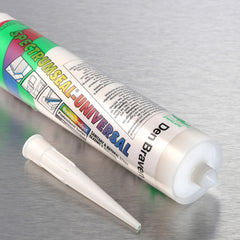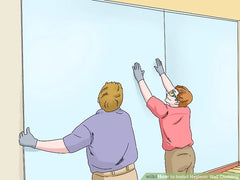In healthcare, kitchens, and food production, hygiene isn’t negotiable. Every wall, surface and joint has to stand up to constant cleaning, harsh chemicals, and strict safety checks. That’s where our PVC hygienic wall cladding system comes in, which has a lifetime guarantee when installed together.
Designed to keep walls spotless, sealed and bacteria-free, PVC cladding is transforming the way clean environments are built. Here’s what makes it so hygienic and why more professionals are choosing it over tiles and paint.
The Secret to Cleaner Walls: Porosity
Polyvinyl chloride (PVC) is a dense thermoplastic polymer with tightly packed molecules, leaving virtually no open pores or capillaries for water or bacteria to enter. This results in a surface that is easy to wipe clean and resistant to contamination.
That’s a huge advantage in places where hygiene is critical. A simple wipe removes contaminants instead of spreading them, making PVC a favourite for infection-control zones, food prep rooms and wash-down areas.

Why Professionals Choose Our Complete Cladding System Over Tiles and Plastering
Our seamless cladding installation system — complete with matching profiles, trims, adhesives, and silicones — enhances hygiene by creating a fully watertight, smooth, and easy-to-clean surface.
Tiles have been used for decades in hygiene-conscious environments, but they’re not always the most practical or reliable option. Depending on their composition, tiles can be porous or non-porous, and that difference has a major impact on hygiene and durability.
Porous tiles, such as unfinished ceramic, allow moisture and liquids to seep through their surface, which can cause staining, cracking, and long-term structural damage. Typical monoporous ceramic tiles have a water absorption rate of around 10%, making them far less resistant to moisture than PVC hygienic wall cladding at just 0.2%.
Non-porous tiles, such as porcelain, perform better with a water absorption rate below 0.5%, but even they can’t match the seamless protection of a complete PVC cladding system.
However, the real weakness isn’t the tile itself, it’s the grout. Grout is inherently porous and over time, it absorbs water and cleaning residues, creating ideal conditions for mould, mildew, and bacterial growth. Once contaminated, grout becomes almost impossible to clean effectively, leading to ongoing hygiene risks and maintenance issues in high-sanitation environments.

Painted plaster also has its own set of problems. Even with specialist coatings, painted walls are prone to flaking, chipping, and absorbing moisture especially in high-traffic or high-humidity areas. Once the paint surface breaks down, cleaning becomes ineffective and the risk of contamination increases.
PVC hygienic wall cladding avoids all these issues. It installs without grout, and each joint can be sealed with profiles/trims and sanitary silicone, resulting in a seamless, continuous finish that’s easy to wipe clean. Installation is quicker, there’s virtually no long-term upkeep, and it’s generally more cost-effective than tiles or paint — ideal for businesses that demand reliable hygiene without breaking the budget.

PVC Complies with EU Regulations For Food Safety
PVC hygienic wall cladding isn’t just easy to clean and resistant to mould, it meets the standards set out in the EU regulations, which governs food hygiene across Europe. The EU Regulation 852/2004 (Chapter II, part b) requires that any wall surface in food-handling or hygiene-sensitive areas must be ‘impervious, non-absorbent, washable, and non-toxic’. PVC hygienic cladding meets all those requirements.
That makes it ideal for HACCP systems and food safety audits. Many installers now specify PVC hygiene panels in kitchens, laboratories and medical settings to ensure long-term compliance with minimal maintenance.

Hygienic Wall Applications
As PVC cladding is hygienic, easy to clean and food-safe, it’s great for environments where hygiene is a priority. This includes:
- Hospitals: Not only does the hygienic wall cladding reduce infection risk and withstands constant disinfection, it comes in a range of colours, which is great for colour zoning for different wards and corridors.
- Commercial Kitchens: Resistant to steam, grease, and chemical cleaners, PVC wall cladding ensures long-term hygiene in commercial and catering environments. Smooth, seamless surfaces make daily cleaning quicker and more effective.
- Food Production: Designed for wash-down zones and HACCP-compliant operations, PVC cladding meets EU 852/2004 hygiene requirements. Its impermeable surface prevents bacterial contamination and simplifies compliance audits.
- Education & Leisure: In high-traffic areas such as schools, gyms, and leisure facilities, PVC cladding delivers lasting durability, impact resistance, and low maintenance — combining hygiene with long-term value.
Simply Cladding
At Simply Cladding, we offer a wide range of hygienic PVC wall cladding in both gloss and satin finishes, available in a variety of colours to suit every environment. Our full hygienic wall cladding system includes matching profiles, trims, adhesives, and silicones, making installation simple and seamless.
Contact us today for friendly expert advice or a no-obligation quote


